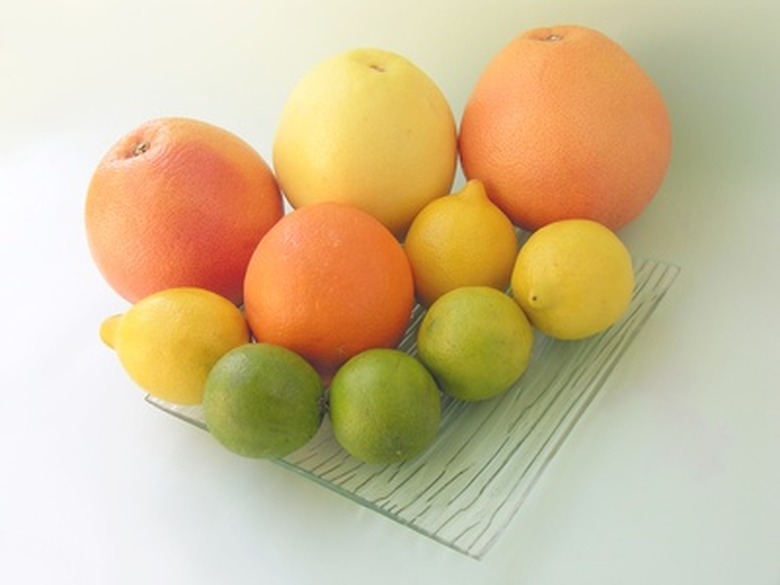How To Measure The Acidity Of Fruits
The pH scale is in the range from 0 to 14 and determines how basic or acidic a solution is. The neutral media has pH 7. Values below 7 correspond to acidic solutions. The majority of fruits contains various organic acids and hence the fruit pH falls into the acidic range between 2 and 6. Acidity of fruits can be determined relatively easy using pH paper. Avoiding high-acid fruit and food may especially help people with digestive or dental problems.
Step 1
Wash fruits with water and then dry them using paper towels.
Step 2
Cut a piece of fruit in half using the knife. Put both halves on the plate.
Step 3
Cut a 1-1/2-inch piece of the pH paper.
Step 4
Take one fruit half and firmly press the piece of the pH paper against the cut side of the fruit.
Step 5
Compare the color of the paper strip with the standard pH scale printed on the pH paper pack to determine the acidity of this fruit.
Step 6
Repeat Steps 2 to 5 for the other fruits.
Things Needed
- pH paper
- Kitchen knife
- Plate
- Paper towel
References
Cite This Article
MLA
Fox, Oxana. "How To Measure The Acidity Of Fruits" sciencing.com, https://www.sciencing.com/measure-acidity-fruits-5661941/. 24 April 2017.
APA
Fox, Oxana. (2017, April 24). How To Measure The Acidity Of Fruits. sciencing.com. Retrieved from https://www.sciencing.com/measure-acidity-fruits-5661941/
Chicago
Fox, Oxana. How To Measure The Acidity Of Fruits last modified March 24, 2022. https://www.sciencing.com/measure-acidity-fruits-5661941/
